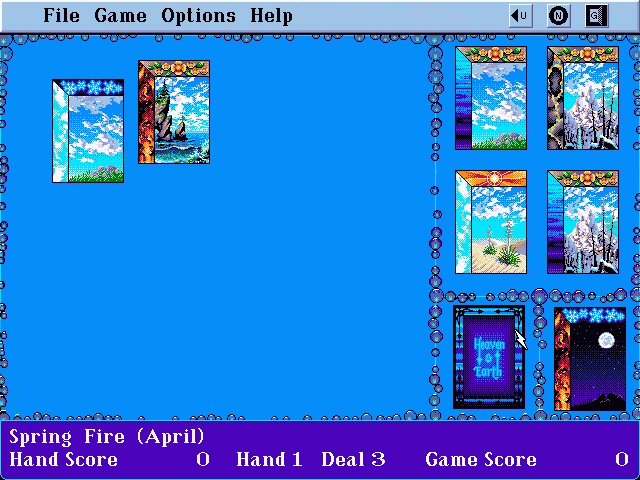What UX Inflation is Costing Your Business
When I was a kid, I fell in love with a PC game called Heaven and Earth. The graphics were gorgeous. It was peaceful (a nice alternative to Wolfenstein 3D which was too scary for me) but had enough tension and variety to keep me engaged. In the thirty years since, I have never found a game that made me feel the same way. A couple of years back, swept away by nostalgia, I went on a mission to find and play this game again.
I pictured myself spending hours playing it on a lazy weekend, introducing it to my husband. I imagined us playing it together and sharing with him the delight I had experienced as a child playing this game – reliving all of the awe and joy of the beauty of the first user experience (UX) I really fell hard for.
Then I found the game.
Here is what I saw.
I was as disappointed as one might be to discover their high school crush was now a violent criminal. How could this be the game I had loved? The graphics were so pixelated, the colors so garish. The interactions were stilted and unnatural. This couldn’t be right.
I had just (painfully) discovered user experience inflation. In the decades since the game first came out, our collective expectations for what a user experience should be have been elevated. What was once cool was now woefully inadequate. The game didn’t change, but the world around it did. And by not changing, its place in the world was eroded.
I didn’t show it to my husband. I didn’t show it to anyone. I closed the tab with a sense of loss a bit out of proportion to the feelings I thought I ought to have toward a mid-90s PC game.
User experience inflation is a reality of the world we inhabit. What we build today will inevitably be less cool tomorrow. So what are we to do?
Invest in originality - No product is immune to UX inflation, but the followers of the world experience it most acutely and severely. If you’re following something, that means it already exists so it’s been around for some time. Accounting for time to market, you’re likely over a year into the lifespan of relevance for that particular take on things before anyone ever lays eyes on it. This shortens the time you get to enjoy the benefits of a relevant interface. There’s also the fact that imitating something else rarely comes with the same strategic thinking as the original. Nuances will be missed, key details will be omitted. Those little gaps put you further behind. Do something a bit different that actually works, and people won’t automatically tie it to a moment in time when everyone else was doing the same thing. Thus, your product feels fresher, longer.
Invest in emotion - As Maya Angelou once said, “People will forget what you said, people will forget what you did, but they will never forget how you made them feel.” This is true - I had forgotten all about the details of the game interface, which is why I didn’t realize how dated it was until I saw it through the lens of wanting to show it to someone else. But I remembered the feelings I have. No software package can stay relevant for decades without updates, but those like Heaven and Earth that invoke the right emotions can stay relevant much longer. The feeling transcends the pixels on the screen.
Invest in peak moments - People tend to remember specific moments of an experience above the overall. It’s why people will stand in line for hours for an amusement park ride, or why we would play solitaire on the PC over and over just for the cool bouncing card animation at the end. Those experiences have peak moments that make the rest of it all feel worth it.
Invest in upgrades to your most-repeated experiences - The same experience, over and over, eventually grows less novel and ingenious even if it’s a really solid experience. Keep optimizing and enhancing the processes users spend the most time in. This doesn’t have to be a huge change (in fact it’s often better if it’s not – more on this in a later post) but something noticeable that tells the user that you care about their experience.
UX inflation is a real cost in software development, but it’s a known cost and one that can be planned for and designed to minimize. The treatment is best envisioned from a big-picture strategic lens, and then the antidote doled out in bits and pieces over time.
If you liked this content, you can have articles like this one sent to your inbox regularly, free of charge, by subscribing here.


